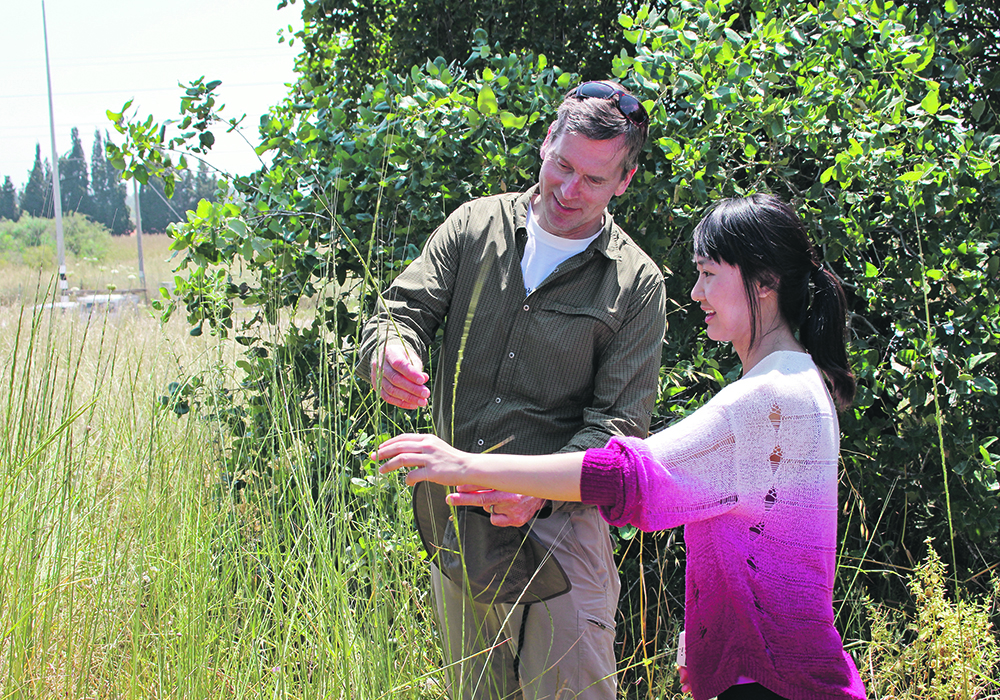Plant scientists are focused on exploiting wild cereal relatives to find genetic traits that could be useful in domestic crops
Wheat stem rust was once one of the most devastating cereal diseases in Canada.
First recorded in Western Canada in 1891, it became a major epidemic in 1916.
Successful plant breeding for stem rust resistance has kept the fungus at bay in recent times, but outbreaks are flaring up in Australia, South Africa and Uganda as new strains, such as Ug99, prove more resilient. The disease has re-surfaced in Germany, Denmark, Sweden, United Kingdom and elsewhere in Europe.
Climate change is also making the search for better rust resistance more urgent because stem rust favours warm conditions.
Now an international team of researchers at the John Innes Centre in the United Kingdom, the University of Minnesota, and King Abdullah University of Science and Technology (KAUST) in Saudi Arabia have identified a stem rust resistant gene in a species of wild goat grass, Aegilops sharonensis. It is a wheat relative and grows in a narrow, threatened strip of habitat from southern Lebanon through coastal Israel to the Gaza Strip.
Brian Steffenson, professor and Lieberman-Okinow endowed chair of cereal disease resistance at the University of Minnesota, said he is focused on exploiting wild cereal relatives to find genetic traits that could be useful in crops.
“If you look at the domestication of our cereals and modern plant breeding, we’ve had a dramatic loss of genetic diversity as crops get more genetically uniform. My position is to go back 8,000 or 10,000 years and capture some of the genetic diversity that was left behind.”
Steffenson said stem rust has potential to destroy vast tracts of wheat in a short time, with its spores able to be carried great distances by the wind.
Brande Wulff, associate professor and wheat researcher at KAUST, said pathogens like stem rust reduce the yield of wheat by 21 percent.
“Not only is the grain itself lost or damaged by the pathogen, but also the energy that goes into production….”
The researchers developed the first accurate genome map of the wild grass. They then used the genome map and a computer software search tool called Mutant Hunter to scan the genome for mutations that were immune to stem rust.
They found a particular gene, Sr62, and transferred it into the susceptible wheat cultivar, Fielder, where it showed strong protection against all tested strains of the fungus.
The discovery offers options for breeders to develop stem rust resistant wheat varieties.
“We can do this both by conventional breeding means and by genetic modification,” said Steffenson. “You can cross Aegilops sharonensis to a wheat cultivar and integrate parts of the chromosome but it’s a long and laborious process and requires a lot of backcrossing to make sure that other deleterious genes are not transferred along with the Sr62.

“With GM technology, one could directly transfer the resistance gene faster and more efficiently into an already acceptable variety without the worry of introgressing other undesirable genes.”
A problem with Sharon goat grass is that it has a long generation time and a tough seed coat and presents some difficulties crossing it with wheat cultivars.
Despite this, Wulff said that two crop breeders in the U.K. have expressed interest in the discovery. Researchers expect that more resistance genes will be identified from populations of the goat grass and perhaps other species of wild grasses using their methods of gene discovery.
No genetically modified wheat is grown commercially in Canada or the United States, but Argentina has approved GM wheat containing the hahb-4 sunflower gene, which confers drought tolerance. Whether this opens the door to more development of commercial GM wheat remains to be seen.
“While there are glimmers of hope for having commercial GM wheat grown in the United States, it will still likely take more time for people to fully accept the technology,” said Steffenson.
Currently, researchers are furthering experimental work and looking at using the newly discovered gene as part of a stack of genes bred into commonly used wheat varieties using genetic modification technology. What makes the goat grass valuable is that it likely has other traits of agricultural importance.
“It is quite possible, indeed our aspiration, that Sr62 will be used as part of a polygene stack to engineer resistance to the wheat stem rust pathogen in bread wheat,” said Wulff. “We have been focusing our studies nearly entirely on disease resistance, but Ae. sharonensis could very well also have elevated tolerance to heat, salinity and drought judging by the environment in which it grows.”

Going forward, Wulff said that one research goal is to identify the molecule in the stem rust pathogen that is recognized by the Sr62 protein, and which triggers its defence response. The molecule, likely a protein, would allow the researchers to use it as a tool to test the function of the Sr62 gene when placed with other stem rust resistance genes. In some circumstances, using the pathogen alone might not be sufficient for testing Sr62 because of the masking abilities of other genes in the stack. In addition, research work has been underway to explore cloning the gene.
“We have been working on this grass species for a while and it is really a treasure trove of useful genes not only for disease resistance but potentially for many other traits as well,” said Steffenson. “Who knows what other genes this species might have to help us mitigate climate change.”
The research was published in the journal Nature Communications.















